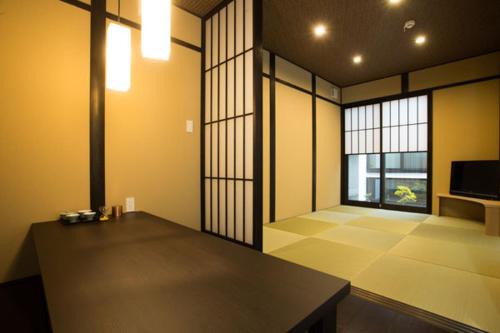Byodoin Temple
menuMenu
Byodoin Temple was built in 1052 during the late Heian period by Fujiwara Yorimichi. Its national treasure, the Phoenix Hall, is known for its elegant beauty. It's a Tendai Buddhist temple.










Highlights
- The beauty of the Phoenix Hall, a National Treasure
- The majesty of the Amitabha Buddha statue
- The breathtaking seasonal views of the beautiful garden
- The splendor of Heian-period architecture
- The opportunity to experience history and culture
Basic Information
- Address
- 1 Uji Byodoincho, Uji City, Kyoto Prefecture Search for tourist attractions in Kyoto
- Access
- 5-minute walk from Byodoin Station on the Keihan Uji Line Show route
- Op.Hours
- 8:30 AM to 5:30 PM (last entry at 5:00 PM)
- Cld.Days
- No holidays
- Fee
- Adults: ¥600
- INFO
- Admission includes the Phoenix Hall, gardens, museum, and Byodo-in Museum Phoenix Hall. The Byodo-in Museum Phoenix Hall is located right next to the Phoenix Hall.
Overview
Recommended nearby attractions
Shōkoku-ji Temple

A historic temple established by Ashikaga Yoshimitsu. Don't miss the "crying dragon" painted on the ceiling of the Hōdō!
Kennin-ji Temple

Full of highlights, including the national treasure "Wind God and Thunder God" folding screens and the ceiling painting of the two dragons! Don't miss the serene garden where you can feel the spirit of Zen.
Hoki-ji Temple

A temple associated with Prince Shotoku, featuring a towering National Treasure five-story pagoda; a place to experience history and culture.
Higashiyama Jisho-ji Temple

The beautiful sight of the Kannon-den hall, known as the "Silver Pavilion," and the serene gardens featuring the white sand "Ginshadan" and "Komyatsu-dai" will soothe your soul.
Daitoku-ji Temple

With its sprawling grounds dotted with sub-temples, serene karesansui (dry landscape) gardens, and historically and culturally significant structures, Daitoku-ji is a must-see Zen temple representing the best of Kyoto.
Chūgū-ji Temple

Chūgū-ji Temple, known for its connection to Prince Shōtoku, is located next to Hōryū-ji Temple and boasts a national treasure five-storied pagoda. Experience the history and culture within its serene grounds.
Jingo-ji Temple

Jingo-ji Temple is a historically significant temple of the Tendai sect, established in the early Heian period by Saicho. Registered as a World Heritage site, it's a must-see Kyoto destination where you can experience history and nature amidst beautiful scenery throughout the year.
Chion-in Temple

Chion-in is the head temple of the Jodo sect, boasting a magnificent gate and a National Treasure Main Hall (Omigedo).
Hoko-ji Temple

A temple associated with Empress Komyo, housing numerous precious Buddhist statues and paintings, including a national treasure eleven-headed Kannon statue.
Kyo-o Gokokuji Kanchiin Temple

Experience history with National Treasure guest halls and structures connected to Miyamoto Musashi. The expansive gardens are breathtaking and offer stunning seasonal views.
Nearby Hotels
Aiso

Tabibitoyado Kirinya Hostel in Uji

Kyoto Uji Hanayashiki Ukifune-en

Uji-Ichibanyado-Nigauri

Hotel Trend JR Uji Ekimae

Kyoto Uji Cha-gan-ju-tei House

Komorebinoyie

Uji Tea Inn

Leeki Studio-Tatami,5ppl,JR5min

Leeki Studio-Twin Bedroom, JR 5min

